About Mohs Surgery
In Mohs surgery, Dr. Ciatti serves as the surgeon, pathologist, and reconstructive surgeon to treat basal cell and squamous cell carcinoma skin cancers. During this process, Dr. Ciatti excises the clinically obvious portion of the skin cancer and then checks how far the cancer spreads under the microscope. After the cancer is successfully removed, Dr. Ciatti creatively and expertly reconstructs the surgical wound. Oftentimes, Dr. Ciatti’s patients compliment him on the flawlessness of his cosmetic results.
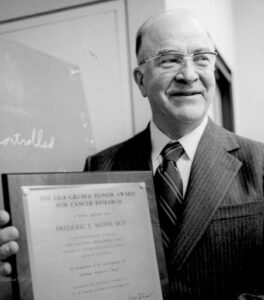
History of Mohs Surgery
In 1941, Dr. Frederic Mohs first described the technique of removing skin cancers under microscopic control. Since that time, various modifications have been made, but the essential premise of the technique is unchanged; that is, to verify under microscopic control the removal of the skin cancer at the time of surgery. (This is in contrast to standard excision which relies on an outside pathology lab to verify the removal of the skin cancer. Often, the skin cancer has not been completely removed, and the patient must be subjected to a second excision). Once the skin cancer is removed by the Mohs technique, the surgeon can then safely reconstruct the defect to minimize any cosmetic disfigurement. Thus, the excision and reconstruction are all done on the same day in most cases.
Not all treatments for skin cancer are created equal
Although simple excision and curettage/electrodessication is often used to treat basal cell and squamous cell carcinomas, Mohs micrographic surgery is by far the most superior. Mohs surgery offers the highest cure rate (up to 99%), the lowest chance of regrowth, the lowest potential for scarring and disfigurement, and the most exact and precise means of removal. This means as much healthy tissue as possible is spared when Dr. Ciatti excises your skin cancer.

Steps of Mohs Surgery

Step 1
After a pre-operative visit and biopsy to confirm the skin cancer, you will come in for Mohs surgery. Your procedure starts with cleansing the area and marking out the obvious skin cancer. This is followed by the administration of a local anesthetic to the area being excised. Once the area is numb to your liking, Dr. Ciatti will remove the visible skin cancer with a small margin of normal-appearing skin (this is called the first layer or stage). After we address any bleeding and bandage the wound, you will relax in the waiting room while Dr. Ciatti processes and examines your tissue.
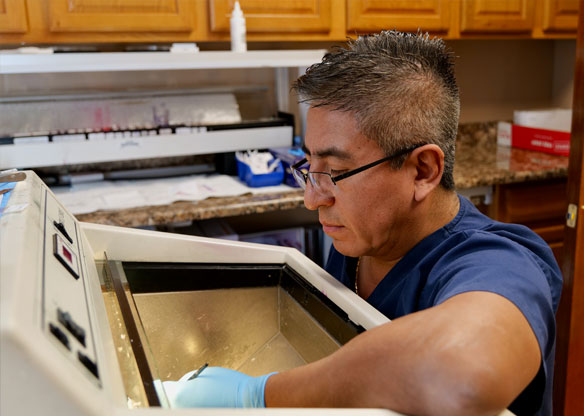
Step 2
Dr. Ciatti then marks the tissue so that he knows the orientation of the tissue relative to the site it came from. Javier, our lab technician, then processes the tissue with a series of chemicals so that Dr. Ciatti can examine it under the microscope.
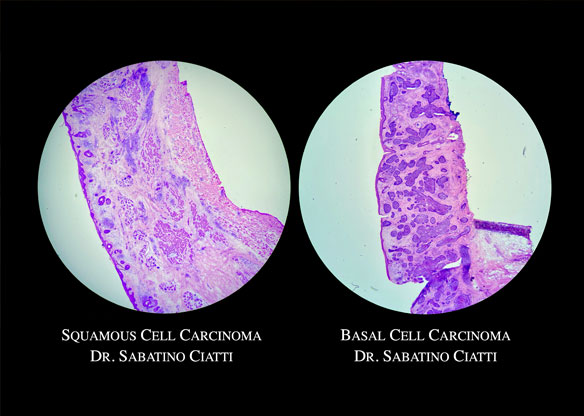
Step 3
After the tissue is processed, the Mohs surgeon examines it under the microscope. If any of the sections contain cancer cells, Dr. Ciatti marks it on his ‘map’ and returns to the patient to remove an additional layer of tissue from the specific area where cancer cells were detected. This process is repeated until the specimens show no cancer cells. Although it sometimes takes 2-3 stages (20 minutes per stage) to completely remove the skin cancer, about 50 percent of cases clear in the first layers.

Step 4
Once the skin cancer is removed, Dr. Ciatti generally reconstructs the defect using plastic reconstructive techniques, like flaps and grafts. After the reconstruction and sutures is complete, we will hand you post-surgery care instructions and send you on your way. Usually, your sutures are removed one week later.
A Visual Guide to Mohs Surgery

Before Mohs surgery (Pre-operative)
Dr. Ciatti cleanses and marks the obvious skin cancer lesion prior to removing it.
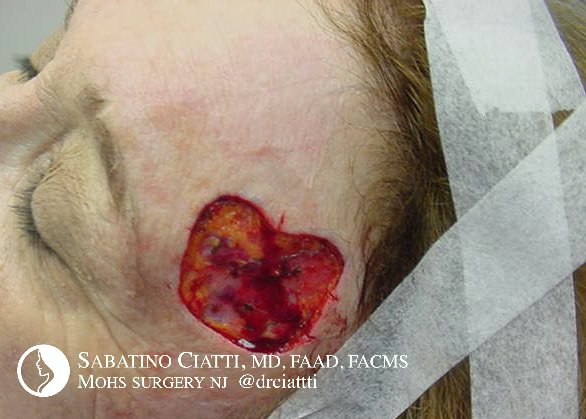
Mohs excision of skin cancer
Dr. Ciatti removes a layer of tissue, and then examines the tissue under the microscope. If any of the sections contain cancer cells, Dr. Ciatti removes an additional layer of tissue from the specific area where cancer cells were detected.
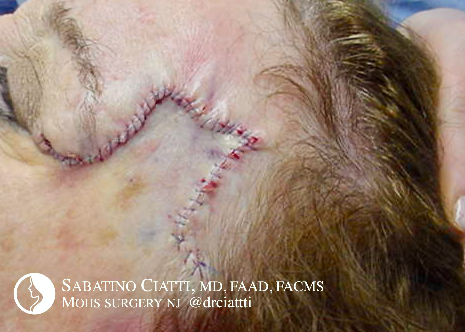
Reconstruction post-Mohs surgery
After the cancer is completely removed, Dr. Ciatti creatively reconstructs the surgical defect using his extensive knowledge of flaps and plastic reconstructive techniques.
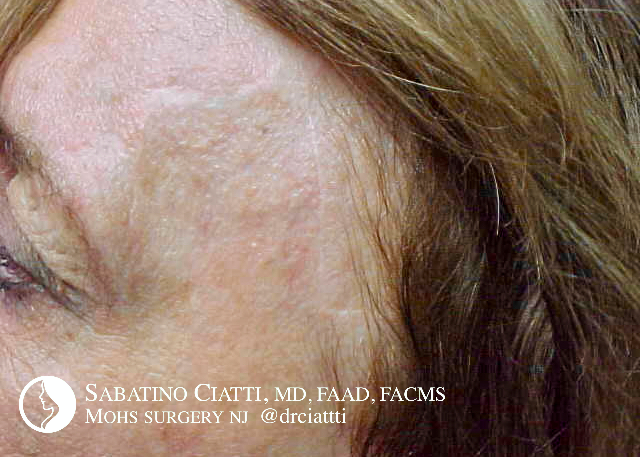
Post-operative result at 3 months
With proper post-surgical care, Dr. Ciatti’s surgeries usually have nearly flawless cosmetic results.
What to expect
If you choose to have a pre-operative visit, we will go over any medications that you are taking. We will give you comprehensive advice on ‘what to take’ and ‘what not to take’ based on your medical history. A light meal prior to the surgery is fine. Remember to bring a book, magazine, or internet-capable device so that you can relax while waiting between stages. If you choose not to have a pre-operative visit, a booklet with instructions will be mailed to you. Please review “How do I prepare for the day of surgery?” In the frequently asked questions section for more information. We’re looking forward to helping you become skin cancer free.
On the day of surgery, you will have considered our medical guidance and the pre-operative information that we provided you with at your pre-operative visit. Your procedure starts with cleansing the area and marking out the obvious skin cancer. This is followed by the administration of a local anesthetic to the area being excised. This can feel like light pinches, though most of our patients find this quite tolerable.
Once the area is numb to your liking, Dr. Ciatti will remove the visible skin cancer with a small margin of normal-appearing skin (this is called the first layer or stage). After we address any bleeding and bandage the wound, you will relax in the waiting room while Dr. Ciatti processes and examines your tissue. We might remove another layer of skin if cancer cells appear in the margins of the extracted tissue. Each layer takes about 20 minutes.
Once the skin cancer is removed in a series of layers, Dr. Ciatti will generally reconstruct the defect using plastic reconstructive techniques, like flaps and grafts. After Dr. Ciatti reconstructs the surgical defect, the area is sutured and bandaged. Dr. Ciatti is renowned for his mastery in excising skin cancer, and was recently honored by Plastic Surgery Select for his superior cosmetic results from his post-Mohs reconstructions.
Before you go on your way, we will give you comprehensive post-surgery care instructions. Usually, we will remove your sutures are removed one week later.
On the day of your Mohs surgery appointment, we will provide you comprehensive information about medications, restrictions and wound care. Every patient is unique and varies in their needs.
Generally, wound care involves cleaning the wound twice a day with 3% hydrogen peroxide, applying an antibiotic ointment (such as Bacitracin, Polysporin, or double antibiotic ointment), followed by a non-stick bandage such as Telfa. We don’t recommend Neosporin or triple antibiotic because there is a higher incidence of allergic reaction to Neomycin in these products. Keep your wound as dry as possible in the days following surgery.
If a graft is used to repair the surgical wound, a ‘permanent’ bandage will be placed by us; this will not be removed until we see you for follow-up in 1 week. In all cases, the wound should be kept as dry except for the use of hydrogen peroxide.
We suggest ice (cold) compresses for 15-20 minutes every hour for the first 24 hours after your surgery. If you do have some discomfort, we might recommend Tylenol. You should avoid medications that promote bleeding, like Aspirin or Motrin. Though bleeding and minor complications rarely happen, we will provide you with comprehensive instructions on the day of surgery should a situation occur. If you are following our directions and still have complications, we advise that you call the office immediately and/or seek medical attention.
After surgery, you should also restrict excessive and unnecessary physical activity (exercise, lifting, running, etc.) for a week if possible.
Typically, we will see you for a suture removal one week after Mohs surgery. If sutures were not used, we will see you for a follow-up 2 to 3 weeks after your surgery. When you come in, we will provide you with comprehensive instructions for best healing strategies. We recommend a skin cancer surveillance period for at least 5 years. Once the wound has completely healed to your satisfaction, you should follow up at least twice a year with your referring general dermatologist. If there’s a recurrence, it usually occurs within the first year following surgery. If you notice any irregularities, please be sure to contact either your referring general dermatologist or us as soon as possible.
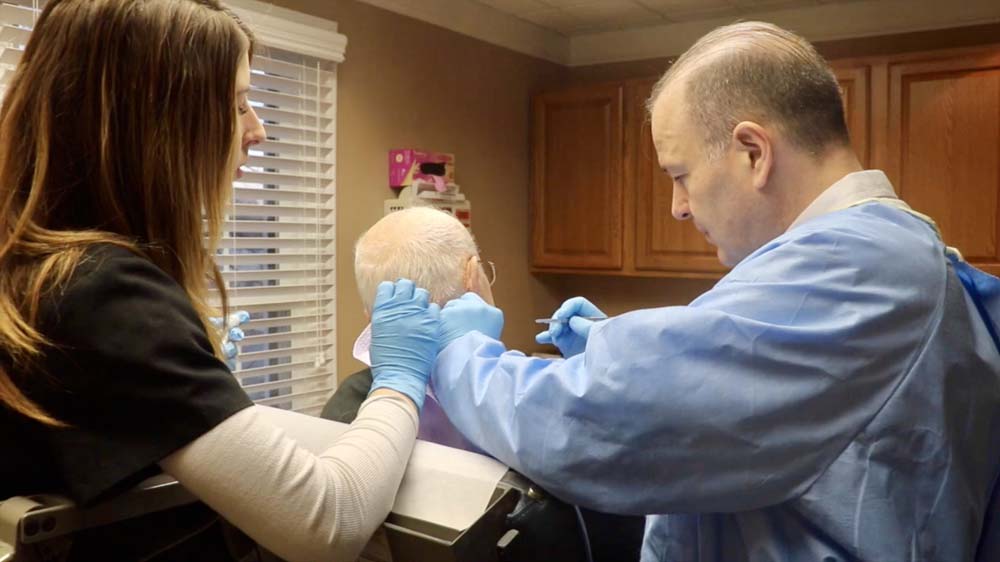
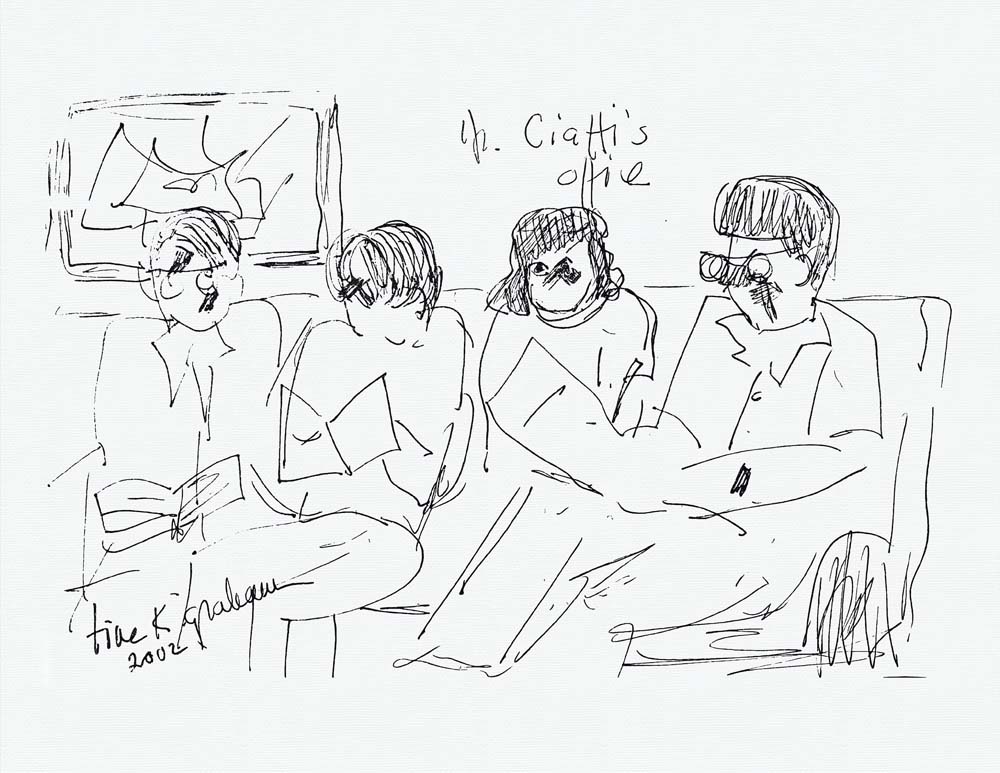
Frequently Asked Questions
Sabatino Ciatti, MD, FAAD, FACMS is a board-certified dermatologist, dermatologic surgeon, and fellowship-trained Mohs micrographic surgeon who has practiced in the heart of Westfield, New Jersey since 1998. Dr. Ciatti is renowned for his professionalism and surgical skills, and is a leading expert on the treatment of skin growths and skin cancers.
Honored by a myriad of medical publications, like America’s Top Surgeons, Dr. Ciatti is a master of excising skin cancer, reconstructing surgical defects, and in providing award-winning cosmetic surgical results.
Mohs micrographic surgery is a highly specialized treatment that offers the highest cure rate for skin cancer. Mohs Surgery is primarily used in the removal of basal cell and squamous cell carcinomas.
In Mohs surgery, the physician serves as surgeon, pathologist and reconstructive surgeon. Dr. Sabatino Ciatti is the leading fellowship-trained Mohs Surgeon in New Jersey with over twenty-five years of experience and thousands of successful surgeries. Dr. Ciatti treats each patient uniquely, and uses the precision and accuracy of the microscope to trace skin cancer down to its root and ensure its removal. With masterful techniques, Dr. Ciatti then reconstructs the surgical defect and often creates award-winning cosmetic results.
Mohs micrographic surgery is the state-or-the-art treatment for skin cancer in which the physician serves as surgeon, pathologist and reconstructive surgeon. It relies on the precision and accuracy of the microscope to trace the skin cancer down to its ‘roots’ and ensure its removal. Some alternatives to Mohs surgery include radiation treatment, but radiation is known to cause more cancer and is often not as successful as the Mohs method.
Mohs offers the highest cure rate (97-99%) out of any method, even if other methods have failed, and offers the lowest potential for scarring. In surgery, Dr. Ciatti preserves as much normal tissue as possible, and is renowned for providing superior cosmetic results.
Mohs surgery should be your treatment of choice when
- The cancer is large
- The edges of the cancer cannot be clearly defined
- The cancer is on an area of the body where it is important to preserve healthy tissue for the maximum functional and cosmetic result, or is likely to recur if treated by common methods (eyelids, nose, ears, lips)
- Prior treatment, like radiation, has failed.
Mohs micrographic surgery should only be performed by specially trained dermatologists and dermatologic surgeons, like Dr. Sabatino Ciatti, who have completed rigorous fellowship training. Such physicians are fellows of the American College of Mohs Micrographic Surgery and Cutaneous Oncology (ACMS). All Mohs surgeons are not created equal. Fellowship-trained Mohs surgeons, like Dr. Ciatti, have the additional training to make them the leading Mohs surgeons in the field.
There are a lot of practitioners who claim they are trained in Mohs surgery but lack fellowship status. If they don’t are not fellowship-trained, they are fraudulent.
If you have a pre-operative visit, Dr. Ciatti will have an opportunity to examine your skin cancer, take your patient history into account, and determine whether the Mohs technique is the most suitable way to treat your skin cancer. The pre-operative visit also gives you an opportunity to meet Dr. Ciatti and to learn about the surgical procedure.
A pre-operative visit (consultation) isn’t always necessary. Oftentimes, your referring physician will determine that the Mohs technique is right for you. If you have been referred to us, usually a biopsy of the skin cancer has already been performed, and we have a pathology report stating the type of skin cancer present. If a biopsy has not been obtained, then we will perform the biopsy at the initial visit.
If it is determined that the Mohs procedure is suitable for your skin cancer, we will help you schedule a date for your surgery. You will also be given a “consent to surgery” form to read and sign. We’re looking forward to helping you.
You should take all of your medications as prescribed. Regarding anticoagulants (blood thinners), policies for discontinuation of such agents has changed.
You should discontinue agents such as fish oil, vitamin E, Ginko, Ginseng, NSAIDs (e.g. ibuprophen, Aleve) for 7 – 10 days prior to surgery.
You should continue to take prescribed anticoagulants such as Coumadin (warfarin), Plavix, Pradaxa, Xarelto, and aspirin as prescribed by your internist or cardiologist.
If you are on Coumadin (warfarin) we ask that your INR be 2.5 or less… please check with your internist/cardiologist.
If you are on multiple anticoagulants, we ask that you check with your internist/cardiologist about staying on one agent and discontinuing the others temporarily. For example, if you are on Coumadin, Plavix, and aspirin, you would continue with your Coumadin, but discontinue Plavix and aspirin for 5 – 7 days. If you have any questions regarding discontinuation of any agents, please call our office.
If you have any prostheses (e.g. artificial knee, heart valve, etc.) and/or have a history of mitral valve prolapse/heart murmur, you may require pre-operative and post-operative antibiotics. Often, patients have already been told by their primary physician that any surgical procedure requires these antibiotics. Please be sure to make us aware of the need for these antibiotics.
A light meal prior to the surgery is fine. Remember to bring a book or magazine to read as there will be a fair amount of waiting in between the tissue stages. It is advisable to bring someone with you. Although in most cases you will probably be able to leave on your own, it may be better to have someone drive you home.
We are not liable for any misinterpretation of the above information. Please contact us if you have any questions. We are happy to help you.
Most of our Mohs surgery cases are completed in 2-4 hours, which includes a series of layers and surgical reconstruction. Every patient varies in how many layers of tissue will be removed. On average, Dr. Ciatti removes a layer of tissue in about 15-20 minutes. Once the layer is removed, any bleeding (which is usually minimal) is controlled using a combination of pressure and electrocautery. Sometimes a suture may be required to tie off a small blood vessel. Once bleeding is controlled, a pressure dressing is applied and you will wait in the waiting room where you can read a book, watch TV, or surf the web. Although the surgery requires 15-20 minutes per layer, the processing and interpretation of the tissue may take up to 1 hour.
Dr. Ciatti interprets the tissue by looking at each of the slides, determining if there are any areas which have residual tumor at the margin, and marking these areas on a drawn ‘map’. If there are any areas of residual tumor on a tissue sample, then the removal of an additional layer is required. Typically, it takes 1-3 layers of tissue to completely remove a tumor. Approximately, fifty-percent of cases take just 1 layer.
After Dr. Ciatti determines that the periphery of the tumor site is free of cancer cells, the Mohs procedure portion of your surgery is complete. Dr. Ciatti will photograph the area to document the size and nature of the wound.
Dr. Ciatti will then give you a few options for dealing with the surgical defect. Generally, Dr. Ciatti reconstructs the surgical defect with plastic techniques. With his mastery of excising skin cancer and reconstructing surgical defects, Dr. Ciatti is renowned for his attention to detail and award-winning surgical reconstructions.
After Mohs surgery, you should have little or no discomfort. We suggest ice (cold) compresses for 15-20 minutes every hour for the first 24 hours after you surgery. If you do have some discomfort, we might recommend Tylenol. You should avoid medications that promote bleeding, like Aspirin or Motrin. Though bleeding and minor complications rarely happen, we will provide you with comprehensive instructions on the day of surgery should a situation occur. After surgery, you should also restrict excessive and unnecessary physical activity (exercise, lifting, running, etc.) for a week if possible.
On the day of surgery, we will provide you comprehensive information about medications, restrictions and wound care. Every patient is unique and varies in their needs.
Typically, we will see you for a suture removal one week after Mohs surgery. If sutures were not used, we will see you for a follow-up 2 to 3 weeks after your surgery. When you come in, we will provide you with comprehensive instructions for best healing strategies. We recommend a skin cancer surveillance period for at least 5 years. Once the wound has completely healed to your satisfaction, you should follow up at least twice a year with your referring general dermatologist. If there’s a recurrence, it usually occurs within the first year following surgery. If you notice any irregularities, please be sure to contact either your referring general dermatologist or us as soon as possible.
Everyone has unique skin and healing processes. Healing mostly depends on age, method of closure (sutures, flap, spontaneous granulation), and the size of the surgical site. The larger the wound, the longer it takes to heal. After Mohs surgery, the body begins the healing process. Typically, a fair amount of healing occurs in the first few weeks. Sutures are generally removed after 1-2 weeks depending on the site. The site of surgery gradually improves over the course of 2 to 3 months, but many patients notice near-complete healing in about a month.
Dr. Ciatti is renowned for his expertise in excising skin cancer, reconstructing surgical defects, and in providing award-winning cosmetic surgical results. Dr. Ciatti is looking forward to helping you.
If you are looking to schedule an appointment with Dr. Sabatino Ciatti, please call our office at 9082326446. One of our dedicated receptionists will help book an appointment for you. We’re looking forward to seeing you!
Additional Information
- Ciatti Sabatino MD. Mohs Surgery: A Guide for Patients. 1998.
- Ciatti, Sabatino MD1; Greenbaum, Steven S. MD1 Modified Purse-String Closure for Reconstruction of Moderate/Large Surgical Defects of the Face, Dermatologic Surgery: March 1999 – Volume 25 – Issue 3 – p 215-220 doi: 10.1046/j.1524-4725.1999.08155.x
- Notice: At Advanced Dermatology, Mohs and Laser Surgery Center, P.A., we are proud to have Dr. Sabatino Ciatti as our Mohs micrographic surgeon. Note: All information on this page is protected by a copyright. We do not permit the reuse of this information in any way, shape, or form (i.e. website, pamphlet, etc.).
Schedule Your Appointment
For more information about Mohs Surgery, please make an appointment. Dr. Ciatti is ready to help you.
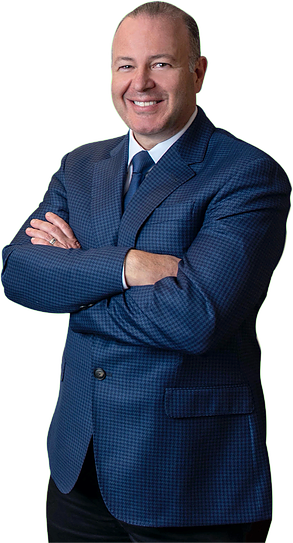
Schedule Your Appointment
For more information about Mohs Surgery, please make an appointment. Dr. Ciatti is ready to help you.

Schedule Your Appointment
For more information about Mohs Surgery, please make an appointment. Dr. Ciatti is ready to help you.


